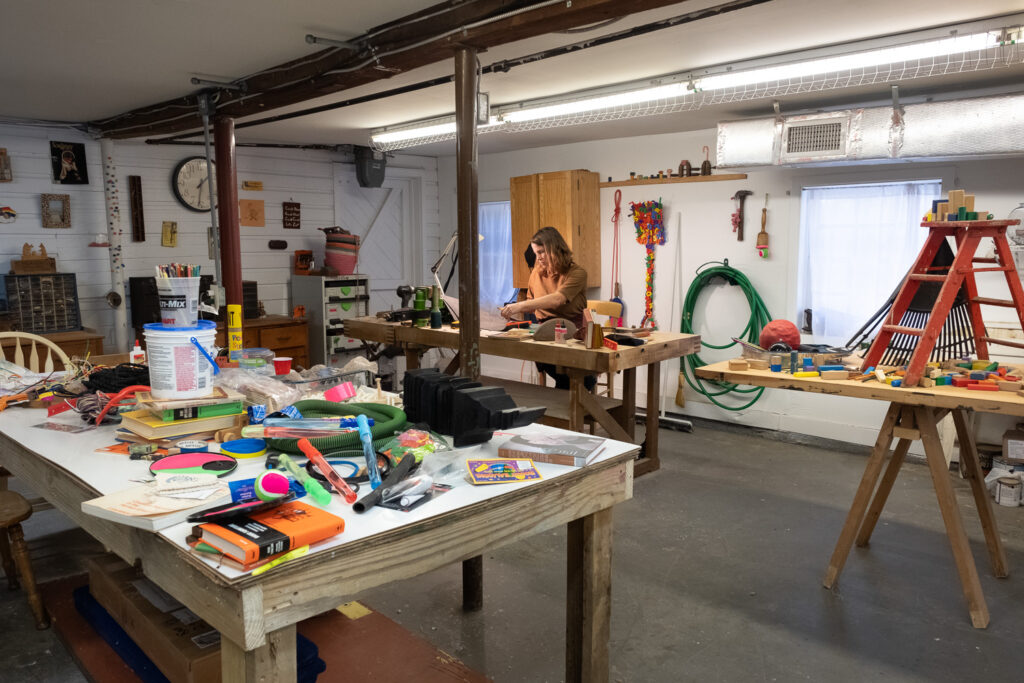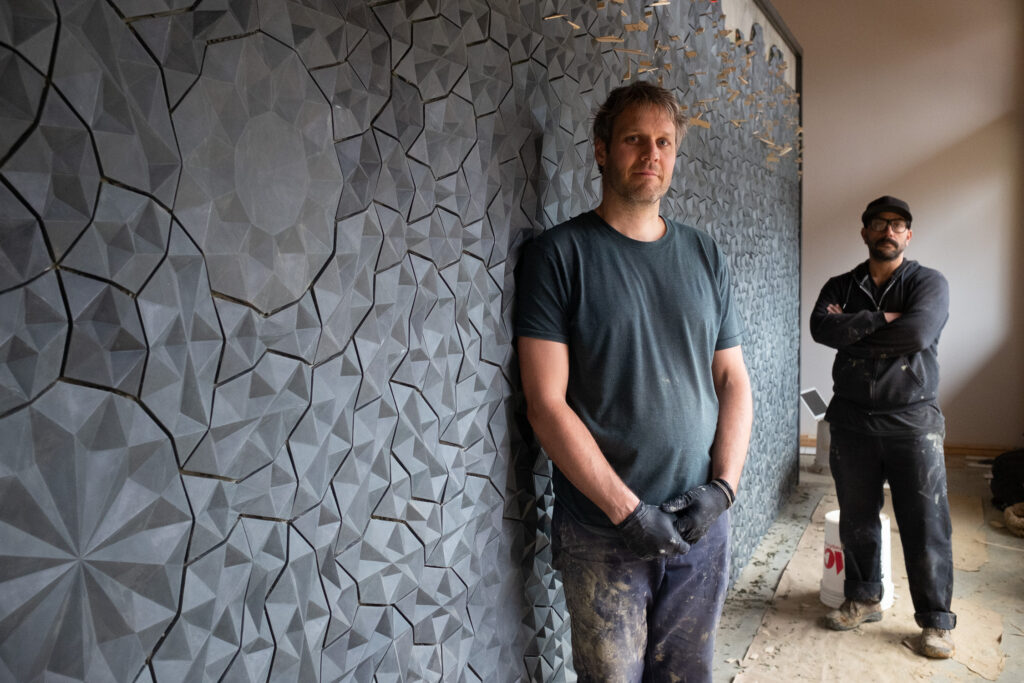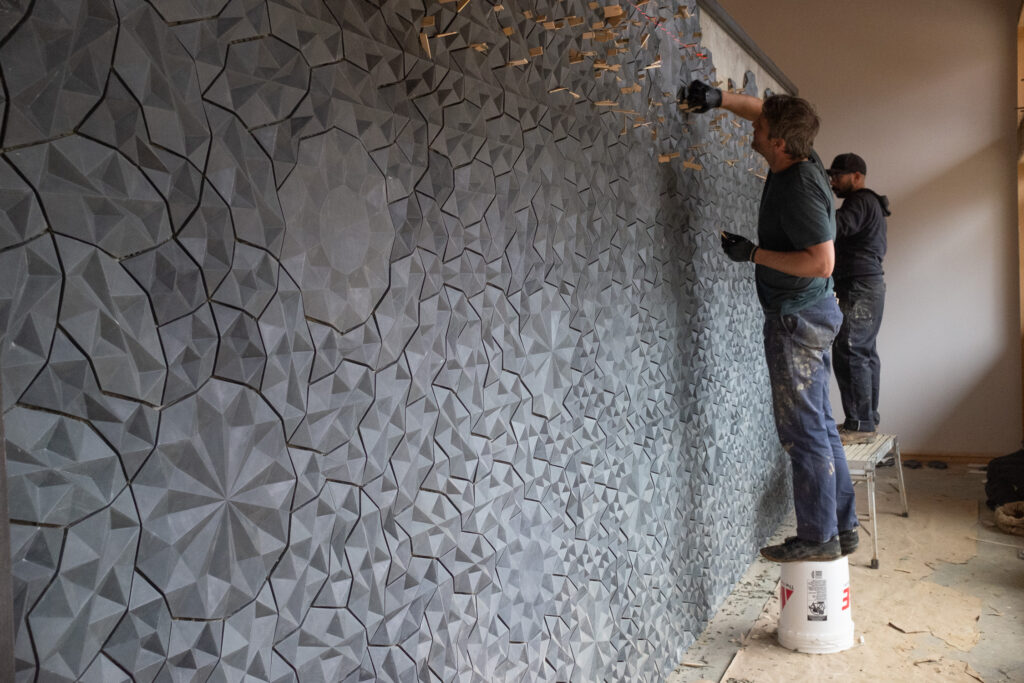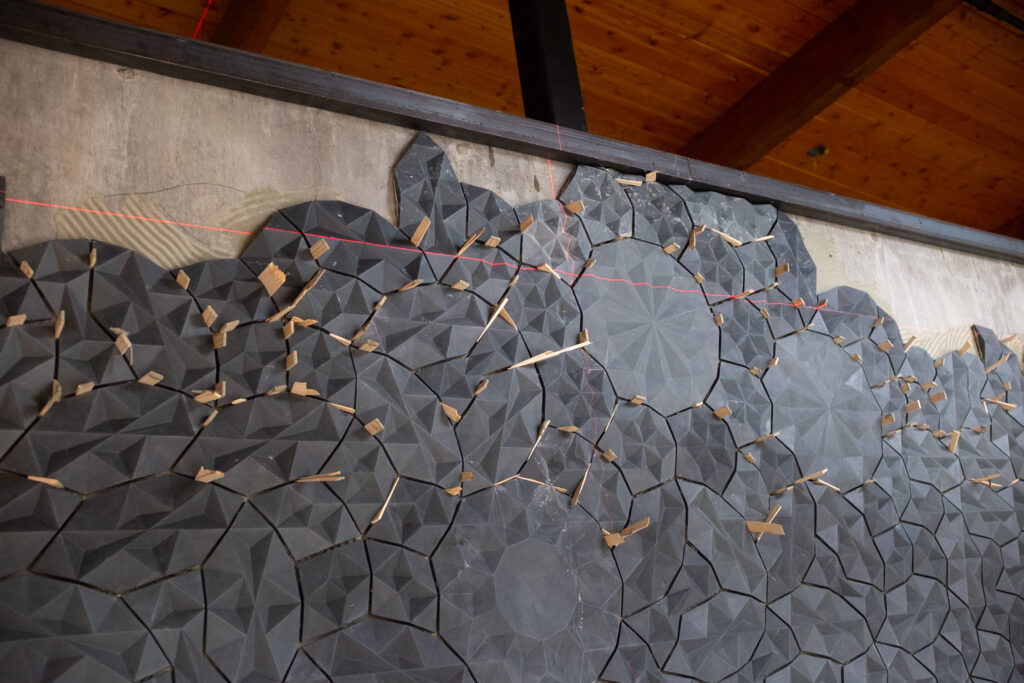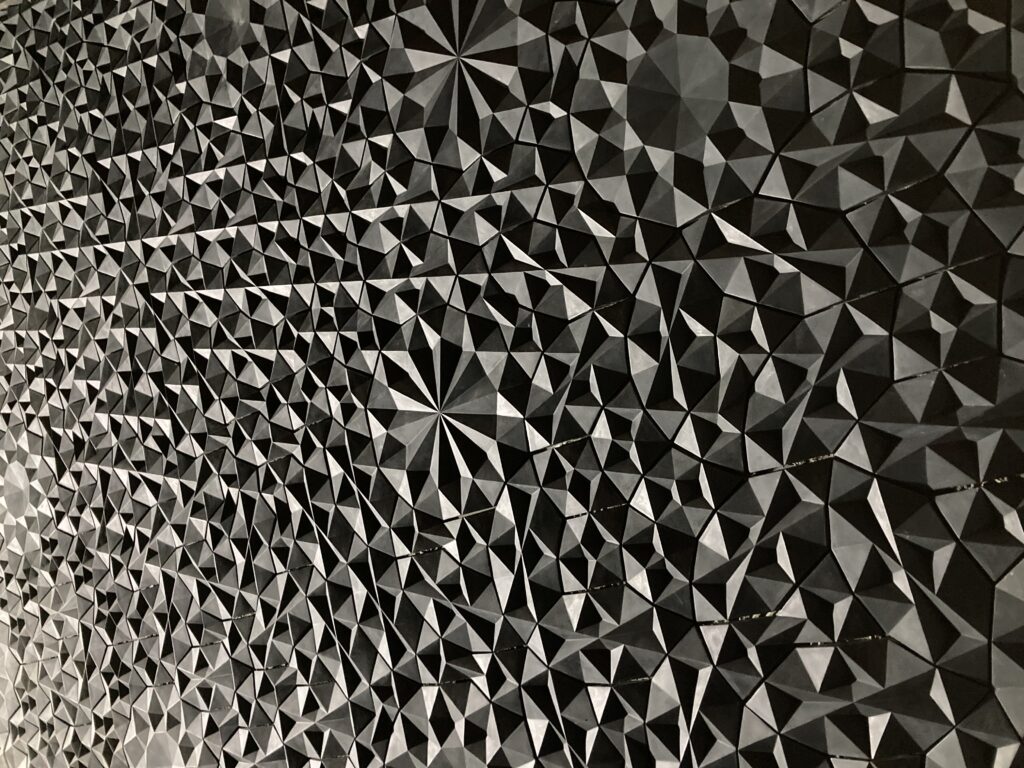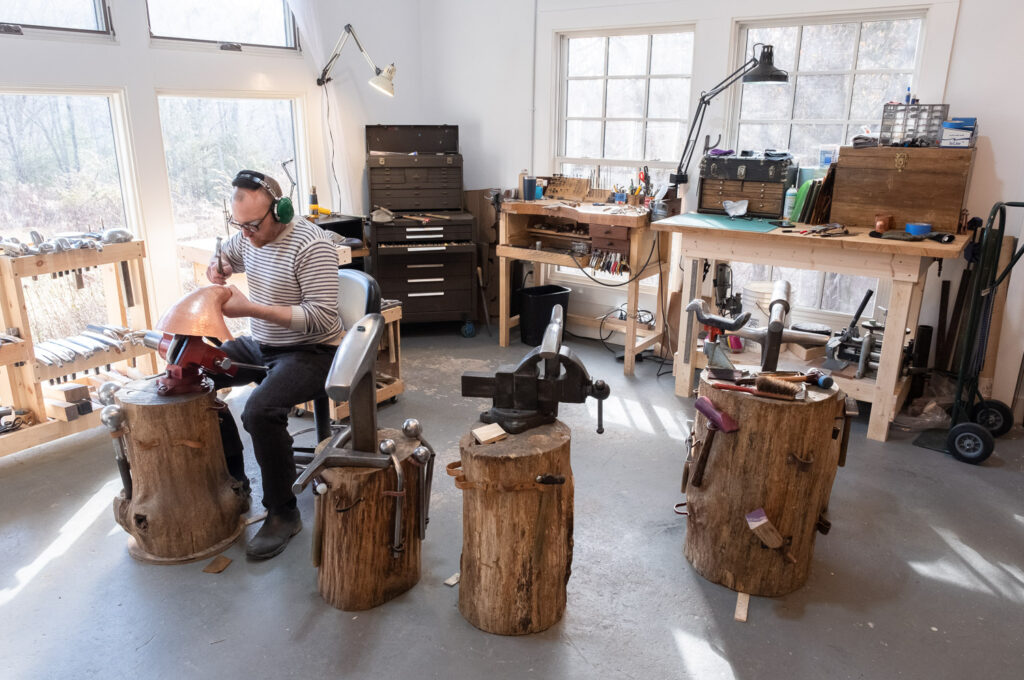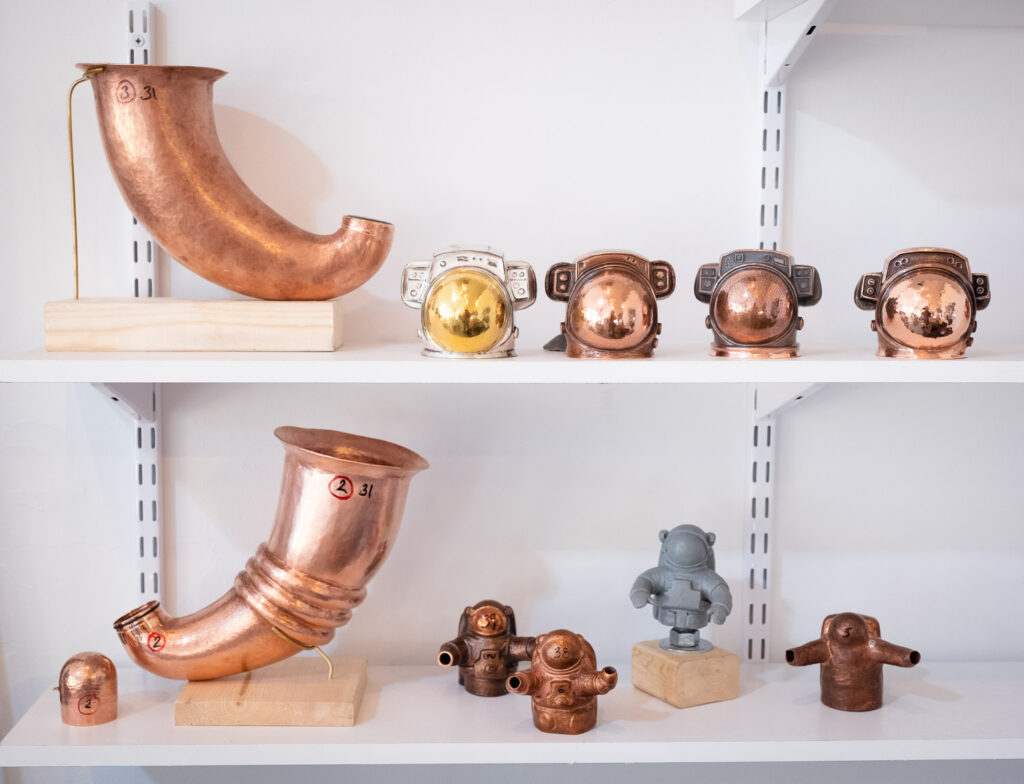Right at the moment, Ellie Richards’s Penland studio is a riot of color, texture, and a bit of chaos. Her large shop tools are tidy and in order, but the tables are strewn with garden tools, toys, games, hoses, and other materials not usually found in a wood studio. On the wall behind her bench are a group of hybrid objects including a shovel that is completely covered with magnetic plastic letters.
Ellie is making work for a two-person show at the Vision Gallery in Phoenix, Arizona titled Play Hard. Each piece, she explains, combines a tool (of the DIY suburban garage variety) with materials of play (the kind that might be part of summer games: bubbles, blocks, balloons etc.), in an effort to create something new, maybe something absurd, certainly something imaginative. “Ten years ago,” she says, “I started exploring how the opposing worlds of work and play could be interrelated. Since then, my work has gone in many directions, but each series seems to maintain a connection to each and their effect on the other. This exhibition is an opportunity to explore this exchange more directly, working in the format of ready-mades and altered found objects.”
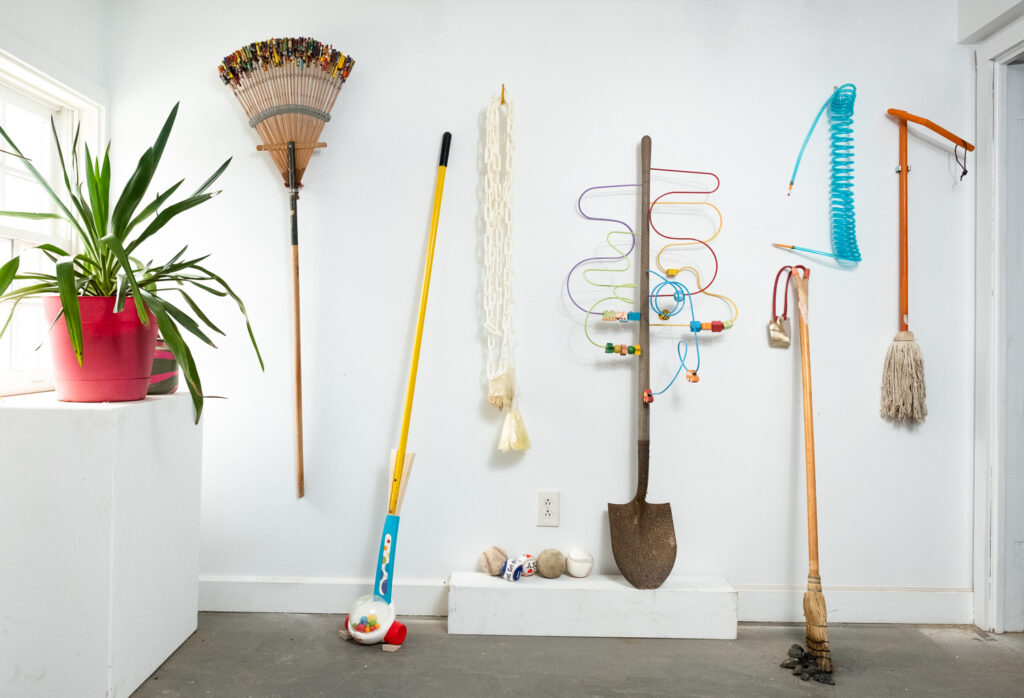
“Life’s responsibilities and too many other barriers stand in the way of simply allowing oneself to have ‘free’ time,” she continued. “In other words, play doesn’t always come easy and usually there is a cost. However, it is my belief that free time, free from expectations and free from obligations or even an agenda, makes way for an increased sense of curiosity and connection with the tangible world.”
Ellie joined the resident artist program in September, 2020, and she was Penland’s wood studio coordinator from 2014 to 2019. Needless to say, she’s a highly skilled woodworker, so this current work might be surprising to some. “For a time all I wanted to do was learn how to build well made structural objects, and in that pursuit I picked up some valuable technical skills. It has always been my intent and one of my biggest challenges to have those skills supplement and support my ideas but not overstate themselves or hinder a more raw form of expression. This balance of seriousness and spontaneity is at the core of my practice.
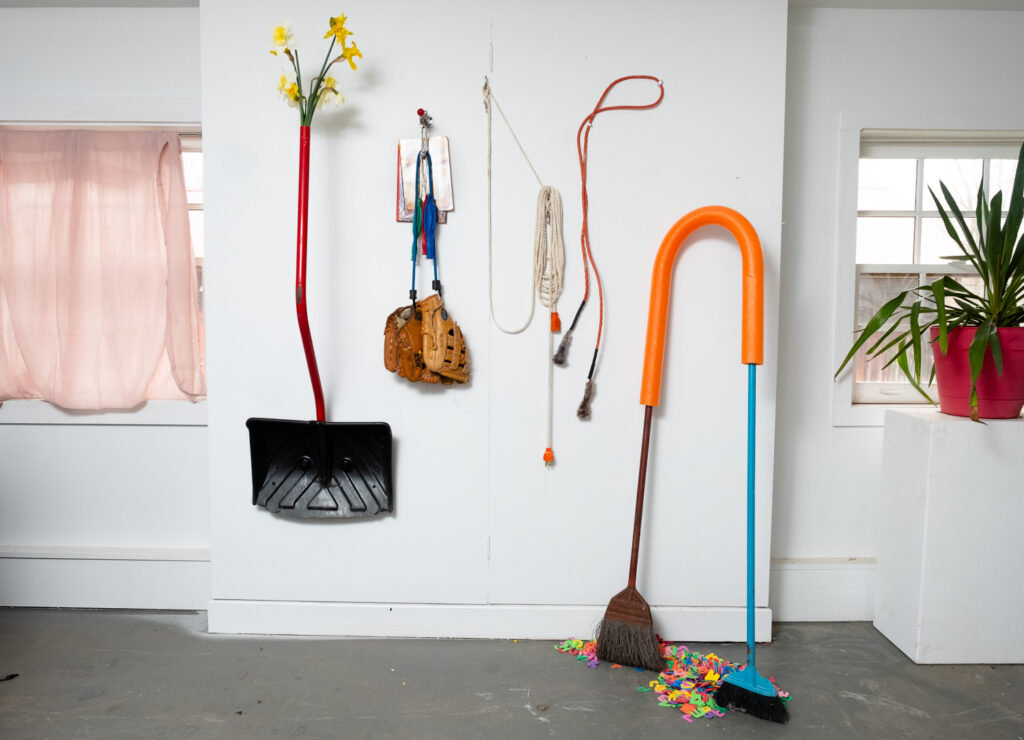
“In this work, the place where two objects merge is the site where I’m focusing on the specifics of craft. Whether that happens with a traditional joint, JB Weld, or a special knot, these tactics of making connections are done with an equal amount of care and sensitivity toward the intent and outcome. This language used to transition one object into another serves as a conversation starter between the materials and new forms created.
“My identity as an artist has always been rooted in using wood as a raw material and woodworking as a field for its historical and technical context. At this juncture, I’m keen to use these experiences in woodworking as a framework for translation into other materials and modes of expression.”
With Ellie at at the beginning of her three-year residency, we can’t wait to see where this takes her.
——————————–
Ellie also just concluded an imaginative multimedia sculpture/furniture installation in Charlotte, which is featured on her website.


